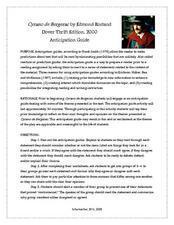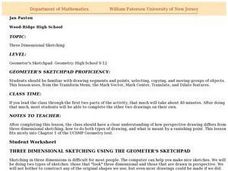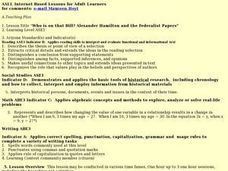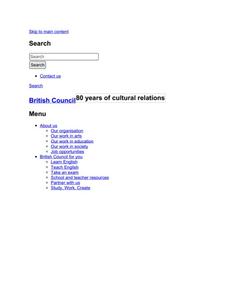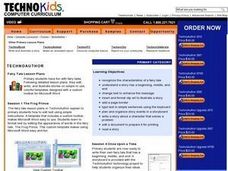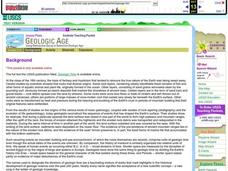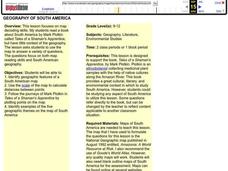Curated OER
Paragraphs
Students observe paragraphs in newspaper articles and the chapters in their reading books writing down reasons for each new paragraph. They then discuss why writers organize their work into paragraphs.
Curated OER
Finding the Flu
Students work to determine when the flu is most prevalent in the United States. They gather data on their own, create calendar, charts, and graphs, analyze their findings and present them. This is a very appropriate winter lesson!
Curated OER
The Beautiful Moon: Story and Comprehension
In this beautiful moon: story and comprehension worksheet, 3rd graders read a one passage about moon facts, then answer 5 multiple choice questions, with answer key provided.
Curated OER
Anticipation Guide Teacher Copy: The Catcher in the Rye
“You don’t have to think too hard when you talk to teachers.” Or so says Holden Caulfield. Challenge his assumption by asking your readers to think about and respond to some of the assertions of Salinger’s narrator. Should a...
Curated OER
Cyrano do Bergerac Anticipation Guide
Introduce Cyrano de Bergerac with an anticipation guide that asks class members to rate a series of qualities that they look for in a friend. Groups then share their responses and present the class with the quality that provided the most...
Curated OER
Three Dimensional Sketching
High schoolers become familiar with drawing segments and points. They understand how perspective drawing differs from three dimensional sketching. They demonstrate three dimensional and perspective drawing.
Curated OER
Direct and Indirect Speech
The basics of direct speech and indirect speech are outlined in this informative language arts presentation. Pupils see that these are the two ways to report what someone is saying. In direct speech, the speaker's exact words are used....
Curated OER
Ready...Set...Go!!
Readers work to increase their reading fluency through repeated timed readings. They learn to read with more excitement and enthusiasm in their voices, making a more pleasurable experience for their listeners.
Curated OER
Romeo and Juliet & Shakespearean Theater
The Bard? Folly? Tragedy? How familiar are your pupils with terms associated with Romeo and Juliet? Class members rate their knowledge of a list of words and then share what they know with the class. The worksheet, discussion questions,...
BioEd Online
Gravity and Buoyancy
Would a baggie filled with water have the same shape sitting on a table as it would in a bucket of water? Why not? Allow learners to find out first-hand the effects of gravity acting alone on the baggie, as well as when gravity is...
Baylor College
Servings and Choices
An important part of balancing caloric intake to energy expenditure is knowing how many Calories you are consuming. In the fifth of a seven-lesson plan series on food and energy, learners estimate their daily caloric intake, then use a...
Curated OER
Who is on that Bill? Alexander Hamilton and the Federalist Papers
Students, who are adult learners, participate in an Internet scavenger hunt in order to assimilate information about the biography of Alexander Hamilton and the Federalist Papers. They look at the Federalist and Anti-Federalist Papers...
Curated OER
Introduction to Multimedia
Sixth graders effectively and efficiently use the software program Microsoft PowerPoint and its more common tools and create a multimedia presentation using their research and autobiographical information. They then give oral...
Curated OER
Card Game to Encourage Discussion
How do you get your class talking? Use a card like the one included to help English language learners join the discussion. On this card, for example, nine sentence starters are provided. You could also use this with native English...
Curated OER
Techno Author
Here is a great way to explore language arts by completing a computer activity with classmates. Youngsters read a fairy tale in class and analyze where the beginning, middle and end are. They create their own story using clip art and...
Curated OER
Geologic Age
Students investigate radioactivity as a tool for measuring geologic time and how geologists use this information to determine the absolute age of rocks or minerals.
Curated OER
Geography of South America
Student's identify geographic features of a South American map. They use the scale of the map to calculate distances between points. They identify examples of the five geographic themes on the map of South America.
Curated OER
Long Vowel Phoneme - ai
Kindergarteners identify the long vowel sound /ai/ in speech and writing. The whole class shares the book, Daisy the Snail, then brainstorms as many /ai/ words as they can. The class constructs a word wall with the /ai/ words.
Curated OER
Peer and Self-evaluation in Spoken Tests: Tools and Methods
Students, in groups, each take a different role and are to either ask or answer questions. They explore how to effectively evaluate themselves and others.
Curated OER
America's Mighty Rivers
Students examine the cultural importance of America's rivers. Using the Mississippi and Hudson Rivers, they examine a story that takes place on each river. They are introduced to the concepts of preservation and stewardship.
Curated OER
Who Do You Know?
Young scholars research and describe the contributions of African-American men and women. They write their notes in a Microsoft Word document. They present their information to the class.
Curated OER
Splat! Boom! Pow! the Influence of Cartoons in Contemporary Art
High schoolers relate abstract expressionism and cultural influences on 1960's art. They use images appropriated from comic books to create a painting in the abstract expressionist style by changing the scale of the comic and reducing...
Curated OER
Parts of the Plot: Constructing a Plot Diagram
Sixth graders conduct a plot diagram for a short story. They identify the problem, the rising action, the climax, the falling action, and the resolution. Students are able to sequence events in a story, and identify the parts of the plot...
Curated OER
Graphing
Intended for a faith-based classroom, this activity requires second graders to create a survey, conduct the survey in multiple classrooms, and graph the results. They can choose between creating a picture or bar graph, or you can require...






